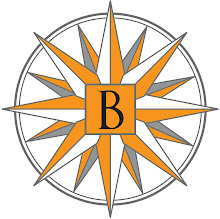 After the August 1893 Sea Islands Hurricane. From The State.
After the August 1893 Sea Islands Hurricane. From The State.
As the U.S. eastern seaboard prepares for Hurricane Irene, we are reminded of the horrific storm that hit at this exact time in 1893. Later dubbed the Sea Islands hurricane, it caused widespread death and destruction, especially in the Carolinas and Georgia, which was already reeling from a yellow fever epidemic.
Washington Post, August 22, 1893:
PANIC OVERTAKES THE CITY
People Flying from Brunswick in Fear of an Epidemic.
ONE MORE CASE OF FEVER
Another Man Is Stricken, and Despite the Assurances of the Surgeons that Danger of the Disease Spreading Has Passed, the Mayor Issues a Proclamation Advising People to Leave--Free Transportation for the Poor--Exodus from the Stricken Town.
ATHENS OPENS HER GATES. SAVANNAH'S RIGID QUARANTINE.
A FEVER SHIP AT WILMINGTON.
SURG. GEN. WYMAN NOTIFIED.
The first storm, in August 1893, was preceded by cyclones off the coast on the 15th, 20th, and 23d, and the high seas engendered by them culminated on August 27-28 in a tide in the Sixth light-house district [New River Inlet, NC, to Jupiter Inlet, FL] higher by 2 feet than any which has been recorded. The center of the storm crossed the coast line between Savannah and Charleston leaving desolation in its course and causing, it is estimated, a loss of more than 2,000 lives on the sea islands of South Carolina. Its force was very great as far south as Cape Canaveral, Florida, and as far north as Bull Bay on the South Carolina coast.Washington Post, August 31, 1893:
On the Savannah River 5 barks were wrecked within a quarter of a mile of Tybee Knoll Cut front light, and in Charleston Harbor the wrecks were numerous. The light-house schooner Pharos, then at anchor in the bight at Cape Canaveral, narrowly escaped being driven ashore after parting the chains of 3 anchors which she had down at the time. The Wolf Island front beacon was overturned by the force of the sea. The Tybee beacon was undermined and overturned. The structures of the Tybee Knoll Cut front beacon, Elba Island front beacon, Bloody Point front beacon, Daufusikie Island front beacon and the wharf at the rear, Hilton Head front beacon, Paris Island front and rear beacons, Morris Island front beacons, and Fort Sumter and Bull Bay light-stations suffered seriously, small structures being carried some distance from their foundations and larger ones being injured by wind and tide. Boat landings and elevated wooden plank walks, of which there are some miles in this district, suffered especially, and almost all of them required such extensive repairs as to make it economical to rebuild them. This also was the case with the long wharves at Tybee Knoll Cut and Daufuskie Island light-stations, and at the buoy and supply depot at Charleston. The beacons on Morris Island, South Carolina, were swept away to sea so completely that nothing remained even of the sand hills on which they formerly stood....
One light-vessel, No. 37, then on Five-Fathom Bank, in the Atlantic Ocean off Cape May, N. J., foundered not far from her moorings, and was practically destroyed by the cyclone of August 23, 1893, when four out of the six men on board were lost. Another light-vessel, the one then on Rattlesnake Shoals, Atlantic Ocean, off Charleston, S. C., was torn from her moorings and driven ashore. Her crew were saved and it is hoped that the vessel may be hauled off from the beach.
Castle Pinckney, Charleston Harbor, South Carolina.—This depot was wrecked by the cyclone of August 26 and 27, 1893, and most of its contents were destroyed.... Boats stored on the land in rear of the fort, high above the ground, were washed away and lost, and even the keeper's dwelling, which was built several feet above the general level of the site, was in serious danger from the waves.
Cutoff Channel range, Patapsco River, Maryland.—A severe storm on August 28, 1893, carried away the bridge, built of timber and stone, connecting the front beacon with the shore, and washed out the strip of land originally purchased for a means of communication between the beacon and the keeper's dwelling on shore...
DROWNED BY THE HUNDRED
Negro Bodies Found in Appalling Numbers Around Beaufort.
FOUNDERED ON THE COAST
The Steamship City of Savannah Wrecked with Scores of Other Craft-Charleston Under Water-Ten Drowned on the Lakes--Tybee and Sullivan Island Villages
Swept Away--Awful Scenes Reported from the South Carolina Marshes.
WRECKED THE CITY OF SAVANNAH.
The Steamship Shattered by the Storm and Driven on the Shoals.














